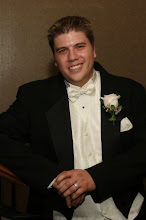This is my first entry on my blog and I thought I would like to discuss various technological recourses I use when teaching music to my elementary school aged children. I first came up with this idea for this post when I was asked to compile a list of favorite internet sites for an assignment in class.
The Dallas Symphony Orchestra (http://www.dsokids.com) maintains a website that is designed help students learn about music. The site is also designed for teachers to be able to utilize the information in creating lesson plans. The entire site is interactive in that students are able to play the piano or draw on the virtual chalkboard. Links to this site include: Composer Corner, Instrument Encyclopedia, and Orchestra Seating Chart to name a few.
I use this site in particular when I am teaching music history to my fifth graders. During this unit students are responsible for researching and writing a paper on a composer. The Composer Corner offers information on various composers that are arranged by historical periods. As a teacher I can print out individual bios or direct students to the website where they can look up their assigned composer.
Another aspect of this site I like to use when I am teaching third graders is the Instrument Encyclopedia. This portion of the site shows students to the correct classification of the instruments. Students are also able to see pictures and hear what the instrument sounds like both individually and in the context of the orchestra. This really allows students to hear how woodwind instruments sound different from brass instruments. Each link is about the individual instrument and contains a synopsis about the instrument.
Phil Tulga is musician that put forth a website that takes a cross-curricular approach to teaching music in his website entitled, Music Thru Curriculum (www.philtulga.com). This idea of cross-curricular education is another topic I addressed in an assignment for class. Cross-curricular teaching has to deal with teaching students a subject matter while including aspects of another subject. This site illustrates this idea by mixing music with core subjects such as math, reading, and science. Musical fractions are introduced to help students visualize rhythms. Not only is this helping the student grasp fractions in math, but the site uses fractions to help them with rhythms as well. Science is also illustrated by showing how sound waves work and how different sound waves can be combined to create various harmonies. Other ideas are also available for the teacher to use in the classroom such as instrument making ideas and a way to have the students create their own rhythmic compositions.
In conclusion DSO for Kids is great site to help students learn about composers and musical instruments. Phil Tulga’s page gives teachers great ideas on how to incorporate cross-curricular activities into their lessons.
Itashiki, M. (2006). DSO for Kids. Retrieved May 27, 2009, from http://www.dsokids.com
Tulga, P. Music Through Curriculum. Retrieved May 27, 2009, from www.philtulga.com
Wednesday, May 27, 2009
Subscribe to:
Post Comments (Atom)


Using different types of technology is very important in reaching our diversity of learners. Integrating technology in our curriculum is very important as it will help our students to learn better. I use the different methods of learning styles for my students to be able to understand. There is no right or wrong learning style. Each one has advantages and disadvantages. If I want to master something, I use all systems. Read a book on the subject, watch a movie that will bring the images, words and concepts to life, use web game, use web practice for problem, interactive web sites with different activities and then begin working with problems. Most other types of learning are extensions of these three basic styles: auditory, tactile, and visual .I use hands on, visual and lab. I use all theory for me to understand. I use different teaching method and different available technology in school to be able to reach them as they all have different learning styles. Several issues may arise when applying technology in the classroom. Among these are (a) choices about which technology to use (Bascelli, Johnson, Langhorst, & Stanley, 2002), (b) how effective technologies are in reinforcing learning (Grasha, 1996), and (c) technology’s role in shifting from an instruction paradigm, which is teacher focused, to a learning paradigm, which is student focused (Van Dusen, 1997).
ReplyDeleteI think it's awesome that you are mixing music with core subjects such as math, reading, and science. As a "former" Title I math teacher the concept of musical fractions intrigues me. I use music and kinesthetic movement with every subject in kindergarten. I am not musically inclined, but somehow I make it work. There is great value in bringing music and motion into lessons- I always thought math and reading were subject areas teacher’s implemented music for the most. Using technology and music together must really peak students interest and I commend both your dedication and line of work!
ReplyDelete